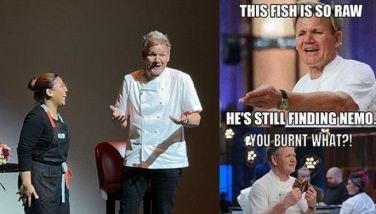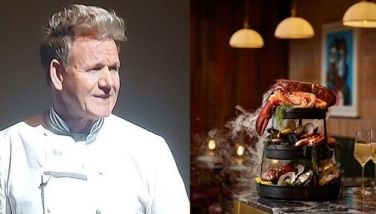Everything you need to know about Hello Kitty
October 28, 2014 | 8:59am
LOS ANGELES (AP) — Hello Kitty didn't need a backstory — or a mouth — to become a global phenomenon.
Her image can be found on just about anything imaginable, from the predictable plush toys and lunch boxes to the not-so-predictable: surfboards, motor oil, an air purifier, kitchen gadgets, fine jewelry, light bulbs and toilet paper.
"You could be born in a Hello Kitty maternity ward," said Dave Marchi, a spokesman for Sanrio, the Japanese company that created Hello Kitty in 1974.
Here's what you need to know about the famous character, who turns 40 on Nov. 1:
Q: Is she a cat or not?
A: People reacted with shock when news emerged over the summer that Hello Kitty is not a cat, but it's really not so simple.
"Sanrio does not reference her as a cat in the traditional sense: She doesn't meow, she doesn't drink milk from a bowl, she doesn't eat cat food," Marchi said. "It all comes down to how you want to describe this anthropomorphized figure. Obviously she looks like a cat. Some people want to think of her and describe her as a cat. But we at Sanrio always reference her as a little girl."
He compared Hello Kitty to Mickey Mouse, a mouse that wears shorts, shoes and gloves.

In this Nov. 22, 2007 file photo, the Hello Kitty balloon makes its first appearance in the annual Macy's Thanksgiving Day parade as it moves through Times Square in New York. The first Hello Kitty Con, a four-day festival of all things Kitty held in honor of the character’s 40th birthday, opens Oct. 30, 2014, in Los Angeles. AP Photo/Frank Franklin II, File
Q: Does Hello Kitty have a back story?
A: According to the SanrioTown website, yes. Her full name is Kitty White. She lives in London, has a twin sister named Mimmy and a pet cat called Charmmy Kitty. She is about five apples tall. Her favorite color is red, and she enjoys playing piano and baking cookies.
Q: Why is Hello Kitty so popular?
A: Branding expert Dorie Clark says Hello Kitty's simple, mouthless design lends to her broad appeal.
"She's stoic, she's expressionless, and people can put onto her almost any kind of emotion," she said. "She can mean almost anything to anyone."
There's also the nostalgia factor as the character turns 40, Clark said: "There's an audience of people who grew up with her... who look back on her as a warm and familiar reminder of their childhood."
Q: Does she belong to a larger cultural phenomenon?
A: She is part of the Japanese culture of cuteness known as kawaii, also seen in characters such as Pikachu.
"It's something clever and creative which contributes to a certain cool factor," anthropology professor Christine R. Yano, author of "Pink Globalization: Hello Kitty's Trek Across the Pacific," told the Los Angeles Times. "For example, take Precious Moments (collectibles). That's cute. But there's nothing cool about Precious Moments. Hello Kitty has the potential to be so many other things."
BrandSpace Articles
<
>
- Latest
- Trending
Trending
Latest
Trending
Latest
Recommended

































